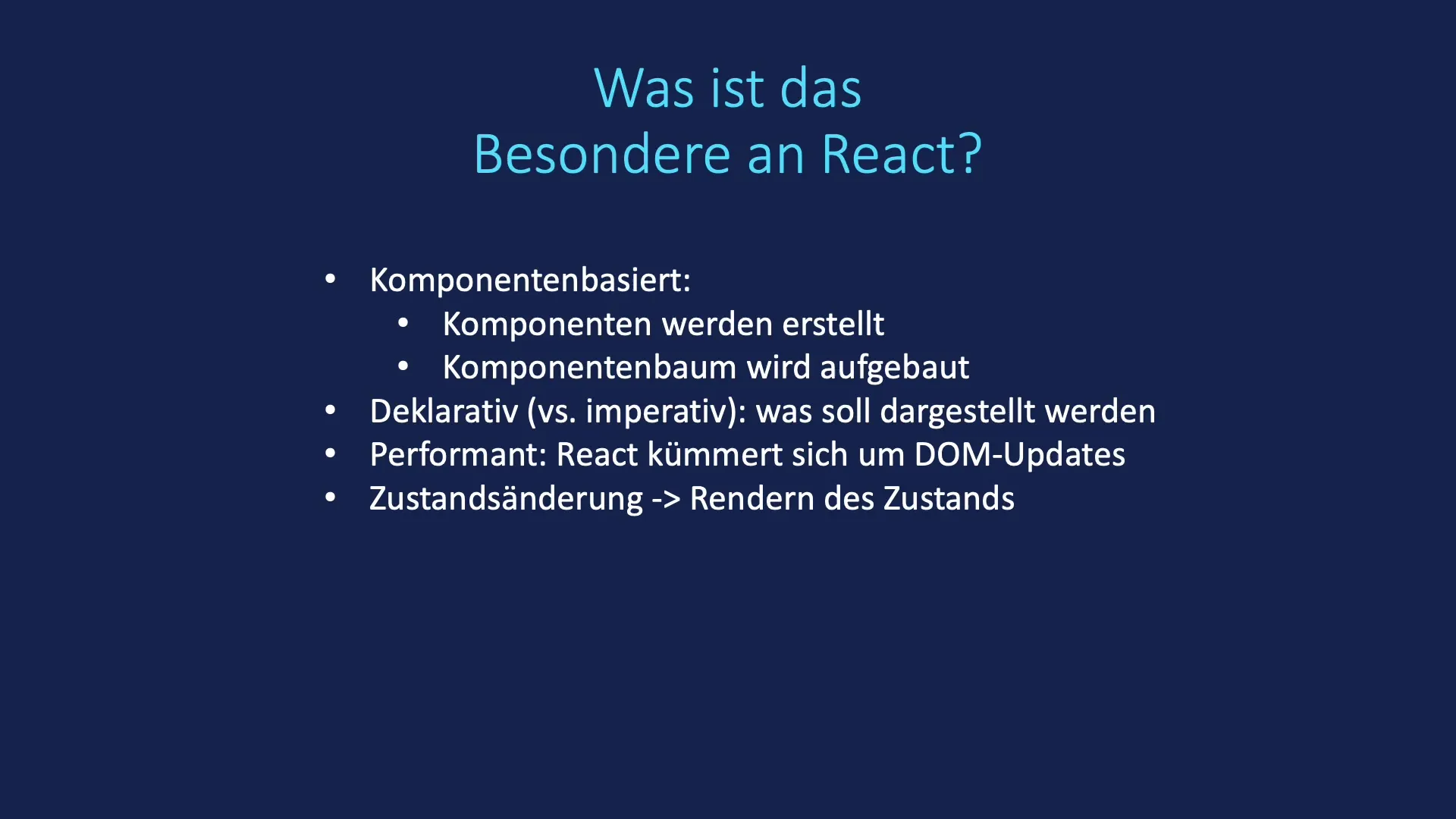When it comes to the development of modern web applications, you cannot avoid talking about React. This library developed by Facebook has not only proven to be extremely popular, but also offers some remarkable advantages over other JavaScript frameworks. In this tutorial, you will learn what makes React so special and why you should consider using it in your projects.
Key Insights
- React is component-based, allowing for a clear structuring of your code.
- The declarative approach of React leads to efficient and automatic updating of the DOM.
- React's state management enables a responsive UI directly connected to user interactions.
- Thanks to the large community and continuous development, React is future-proof.
Step-by-Step Guide to Using React
Component-Based Approach
A central feature of React is the component-based approach. This means that your User Interface (UI) consists of reusable and isolated components. These components are usually functions or classes describing the rendering of UI elements. You can create a component by defining, for example, a simple button element that you can use multiple times in your application.

This modularity not only promotes code reuse but also helps reduce the complexity of your application. It is important to understand that each component can have its own internal state. This is particularly useful when data within the component changes.
Declarative Approach
Unlike many other frameworks that use an imperative style, React follows a declarative approach. This means you describe to your code what you want to see based on the current state of your application, rather than manipulating the DOM manually. For example, if you want to represent a list of items, you simply tell React how this list should look, instead of creating or updating it yourself.
React then takes care of all updates in the background. When the application state changes, React detects the differences between the previous and new states and renders only the necessary changes in the DOM. This leads to a significant increase in efficiency and saves resources.
State Management
State management is another important aspect of React. The "state" of your components can come from various sources. A component can have its internal state, while at the same time, it can receive external data in the form of "props." This allows a clear separation between what a component manages itself and what is provided externally.
When an event occurs, such as clicking a button or a change in an input field, the state is updated. These state changes cause React to rerender the component, thus updating the UI to reflect the latest changes, visible to the user.
Efficient DOM Updates
One of the biggest challenges in web development is interacting with the DOM, as DOM manipulations are typically slow and resource-intensive. React uses a virtual DOM, meaning that updates are made to an in-memory copy of the DOM before being applied to the page. This minimizes the number of direct DOM manipulations, improving the performance of your application.
This not only makes React fast but also powerful. With each library update, new optimizations and ways to increase performance are introduced. So you can rely on React to remain efficient in the future as well.
Using JSX
When working with React, you will quickly come across JSX. JSX is a syntax extension for JavaScript that allows you to write HTML-like syntax directly in your JavaScript code. This is one of the reasons why many developers find React intuitive. With JSX, you can declaratively describe your UI components, significantly improving the readability of your code.
By using JSX, you can unify the structure of your components and their logic in one place, making it easier to maintain and evolve your application.
Conclusion on React
In conclusion, React offers excellent opportunities for developing modern web applications due to its component-based and declarative approach, efficient state management, and virtual DOM. Access to extensive community resources and ongoing development make React an excellent choice for developers.
Summary
In this tutorial, you have gained a comprehensive overview of the special features of React. You now know the advantages of the component-based approach, the declarative programming style, how state management works, and the importance of JSX.
Frequently Asked Questions
What is React?React is a JavaScript library for building user interfaces developed by Facebook.
Why use a component-based structure?This structure promotes reusability and enhances code organization.
What does declarative programming approach mean?In this approach, you describe what you want to see, not how to achieve it, which leads to fewer errors.
How does state work in React?Components can have their own internal state while receiving data via props from the outside.
What are the benefits of JSX?JSX combines the benefits of HTML-like syntax with JavaScript, which increases code readability.


